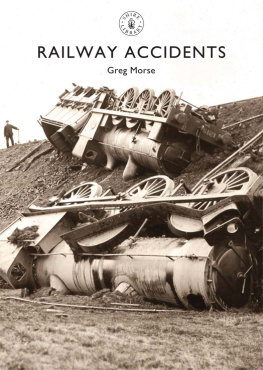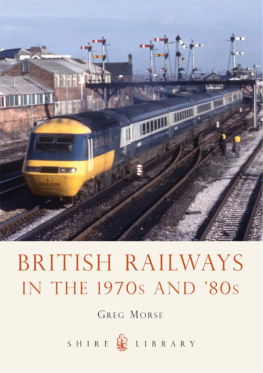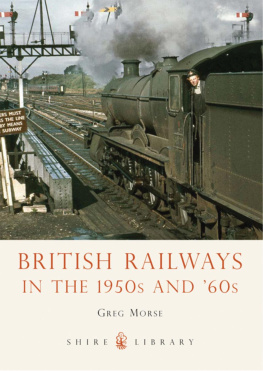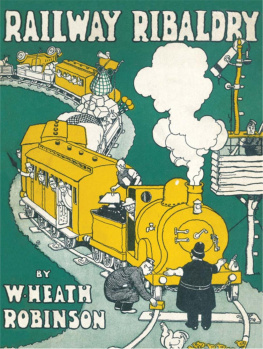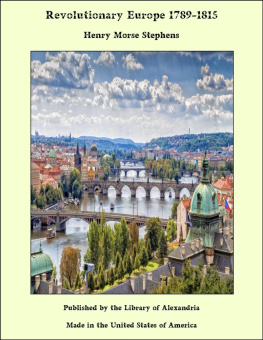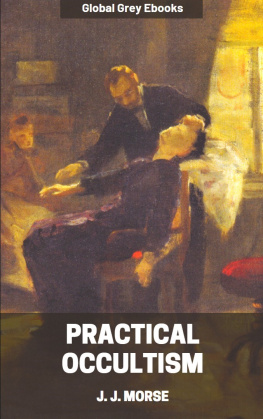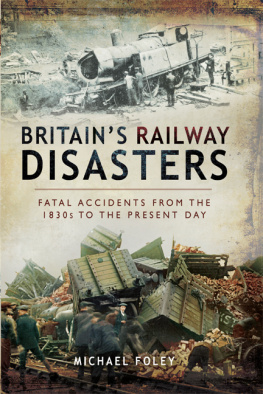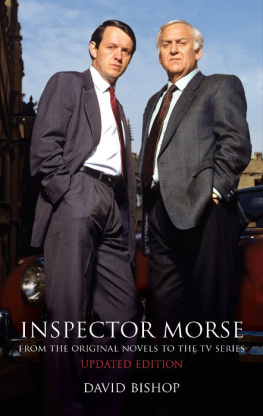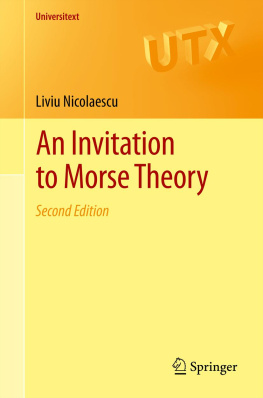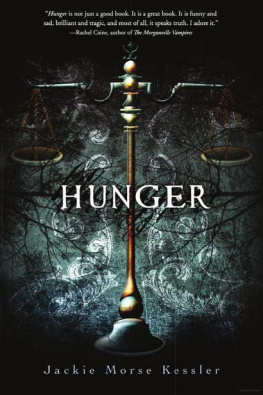Greg Morse - Railway Accidents
Here you can read online Greg Morse - Railway Accidents full text of the book (entire story) in english for free. Download pdf and epub, get meaning, cover and reviews about this ebook. year: 2014, genre: Non-fiction. Description of the work, (preface) as well as reviews are available. Best literature library LitArk.com created for fans of good reading and offers a wide selection of genres:
Romance novel
Science fiction
Adventure
Detective
Science
History
Home and family
Prose
Art
Politics
Computer
Non-fiction
Religion
Business
Children
Humor
Choose a favorite category and find really read worthwhile books. Enjoy immersion in the world of imagination, feel the emotions of the characters or learn something new for yourself, make an fascinating discovery.
- Book:Railway Accidents
- Author:
- Genre:
- Year:2014
- Rating:3 / 5
- Favourites:Add to favourites
- Your mark:
- 60
- 1
- 2
- 3
- 4
- 5
Railway Accidents: summary, description and annotation
We offer to read an annotation, description, summary or preface (depends on what the author of the book "Railway Accidents" wrote himself). If you haven't found the necessary information about the book — write in the comments, we will try to find it.
Railway Accidents — read online for free the complete book (whole text) full work
Below is the text of the book, divided by pages. System saving the place of the last page read, allows you to conveniently read the book "Railway Accidents" online for free, without having to search again every time where you left off. Put a bookmark, and you can go to the page where you finished reading at any time.
Font size:
Interval:
Bookmark:
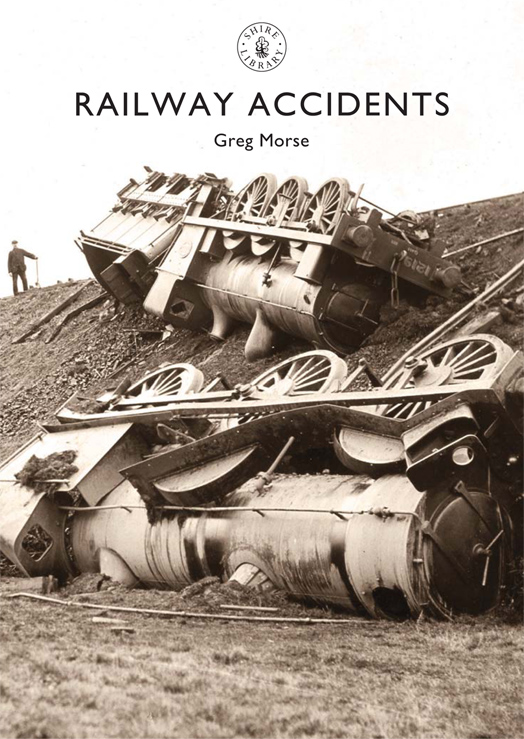

RAILWAY ACCIDENTS
Greg Morse
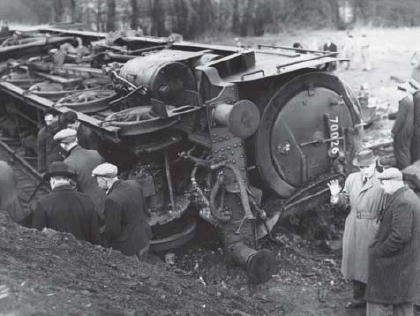
The post-accident scene at Milton, near Didcot. At 1:13 p.m. on 22 November 1955, an excursion from Treherbert to Paddington derailed when the driver failed to slow for a crossover being used to divert services away from engineering works. Eleven people were killed.
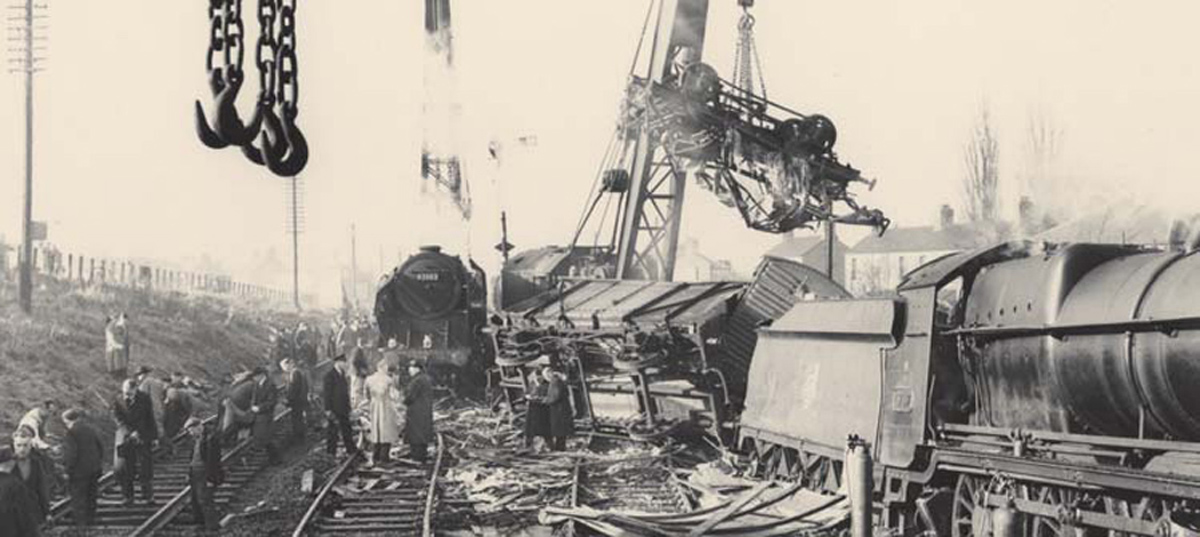
Recovery operations are well under way at Stratton (near Swindon) in November 1958. A freight had come off at the trap points a turnout used to protect loops and sidings from unauthorised train movements and its wagons had ended up foul of the main line. They were struck by two other trains, one of which can be seen in the background.
CONTENTS
The red beam burns against the night; the driver stops the train and waits.
W AITING . Thats the lot of the goods driver: waiting in a loop for an express to pass by; waiting in a yard for the off. But wait he must the signal is red and red means danger. It also means safe: red signals warn drivers of points set against them, obstructions up ahead, and of course other trains. So if a driver passes a signal at danger if theres a SPAD an accident can occur.
But what if a red signal actually shows green? It should be impossible; it is very rare. Yet thats exactly what happened on 12 December 1988, when a phantom aspect led a packed rush-hour service into the rear of another near Clapham Junction. The impact forced a passing empty unit off the rails, killed thirty-five people and injured almost five hundred more.
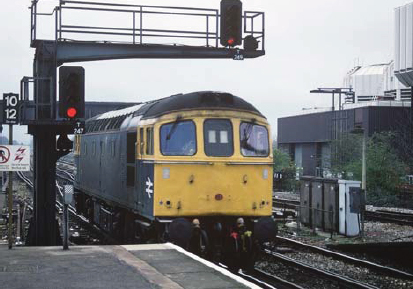
The railways sentinel of safety has long been the signal. This cantilever has heads protecting two lines. It looks as though 33211 has committed a signal passed at danger incident a SPAD. In fact, the signal has returned to red in order to protect the locomotive as it continues its journey.
The resulting inquiry found that a live wire had been left dangling in a relay room; when jolted a couple of weeks later, it touched a terminal, made a connection and prevented a signal from returning to danger after the passage of an earlier train. Beneath this surface failure, investigators also found problems with management, supervision, training and rostering. Its a basic truth about accidents: that theres always more than one cause. Thus, at Bellgrove Junction on 6 March 1989, a driver passed a signal at danger, true, but the fatal collision that followed would not have come had the guard not given the right away while the red light was still shining, or if BR had not altered the track layout in such a way that a SPAD could put one train into the path of another.
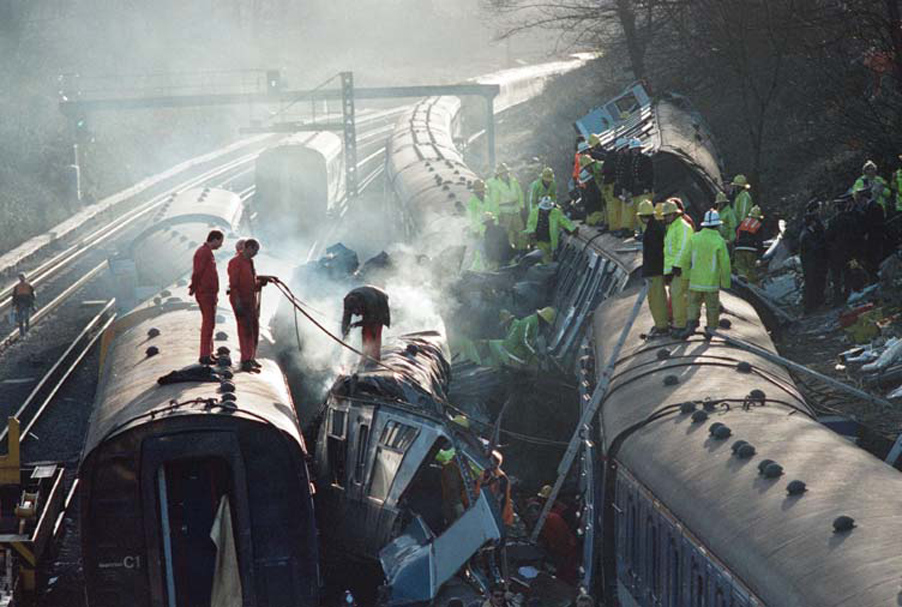
The Clapham collision of 12 December 1988. Here, firemen and engineers are cutting through the wreckage in the search for survivors.
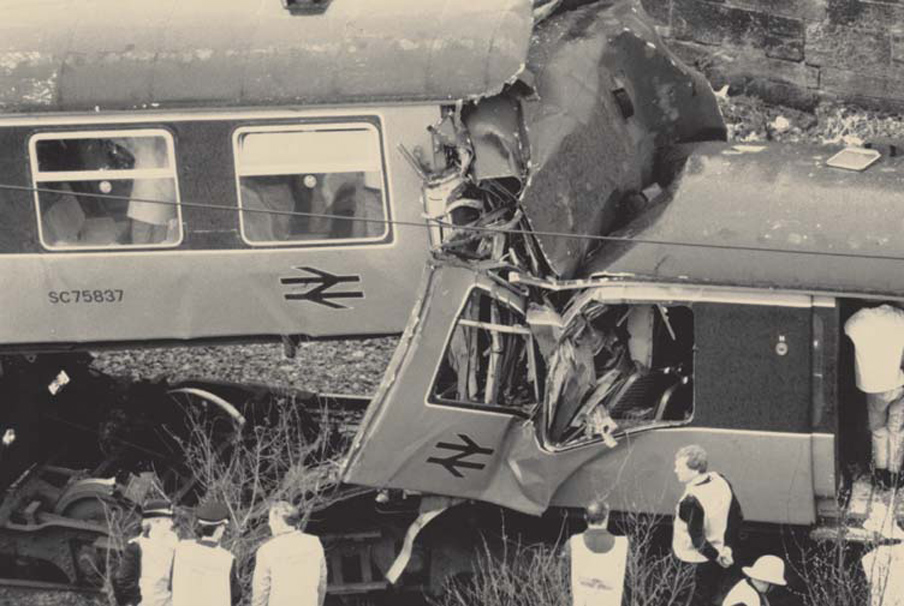
In the causal chain of the fatal accident at Bellgrove was the simplification of the junction from a double-track arrangement to one which included a short stretch of single track.
The SPAD at Purley two days before seemed to be an exception to the rule, seemed in fact to be all the drivers fault. After all, it was he who took his train past a red, his mistake that caused it to collide with the rear of another, his negligence that killed five people and injured eighty-eight more. Thats certainly what the press thought, who pilloried him in their pages, and what the courts thought, who sentenced him to eighteen months in prison. Indeed, the driver himself had never said otherwise, had never done anything but bravely admit his guilt. Except that the truth was not nearly so simple.
The same signal had been passed at danger four times before; such things are seldom coincidental, and often suggest that the position of the gantry or post makes the head prone to being overlooked. In this case, though drivers had slightly longer to see the signal while in motion than the seven seconds considered acceptable for a 90-mph line, it became obscured by the station buildings as the train approached. The investigating officer recommended that erecting a repeater would lengthen this sighting time and help cut the number of SPADs at the signal itself. The new evidence was accepted by the court in 2007 and the conviction overturned. Sadly, the driver would live with his good name restored for just two more years.
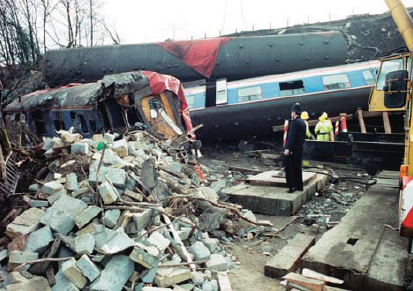
The prison sentence of the driver involved in the collision at Purley was reduced from eighteen months to four on appeal, but when the new evidence was presented in 2007, his conviction was overturned. He drowned in a boating accident two years later.
Clapham, Purley and Bellgrove mark 19889 as a pivotal period for railway safety. Much technology had been applied to accident prevention by this time; much more would follow. This book charts these developments, along with the checks and balances between investigators and operators, and the abiding need to respect the lessons of the past, both today and tomorrow.

Behind every statistic is a face. These floral tributes were placed at the Clapham crash site by mourners in 1988.
Those who heard it would remember the sound for the rest of their lives: the crunch of bone, the cry of pain. And it was meant to be such an auspicious day, a great day for Britain ...
N OT THAT THE opening of the Liverpool & Manchester Railway could ever be as joyous as the opening of the Stockton & Darlington in 1825: George IV was now dead, unemployment was rife, and there were concerns about another revolution in France. Yet the Act had been passed, the money had been spent, and the famous Rainhill Trials had demonstrated the value of steam. By 15 September 1830, the stage was well and truly set for the launch of this, the first timetabled passenger line in the world.
Planned as a grand procession, the opening ceremony would feature eight trains, each conveying the great and good from one city to the other at speeds unheard of hitherto. A run in August had shown that the line and its locomotives were ready. Now, at Crown Street station, the crowd was ready, the flags were ready, and the Stephensons were ready too. The new king failed to appear, but the Duke of Wellington, the redoubtable (though none too popular) Prime Minister, did along with Sir Robert Peel and Liverpool MP William Huskisson, one of the schemes biggest supporters. They, and some eighty lords, ladies and ambassadors, soon boarded the leading special.
Next pageFont size:
Interval:
Bookmark:
Similar books «Railway Accidents»
Look at similar books to Railway Accidents. We have selected literature similar in name and meaning in the hope of providing readers with more options to find new, interesting, not yet read works.
Discussion, reviews of the book Railway Accidents and just readers' own opinions. Leave your comments, write what you think about the work, its meaning or the main characters. Specify what exactly you liked and what you didn't like, and why you think so.

